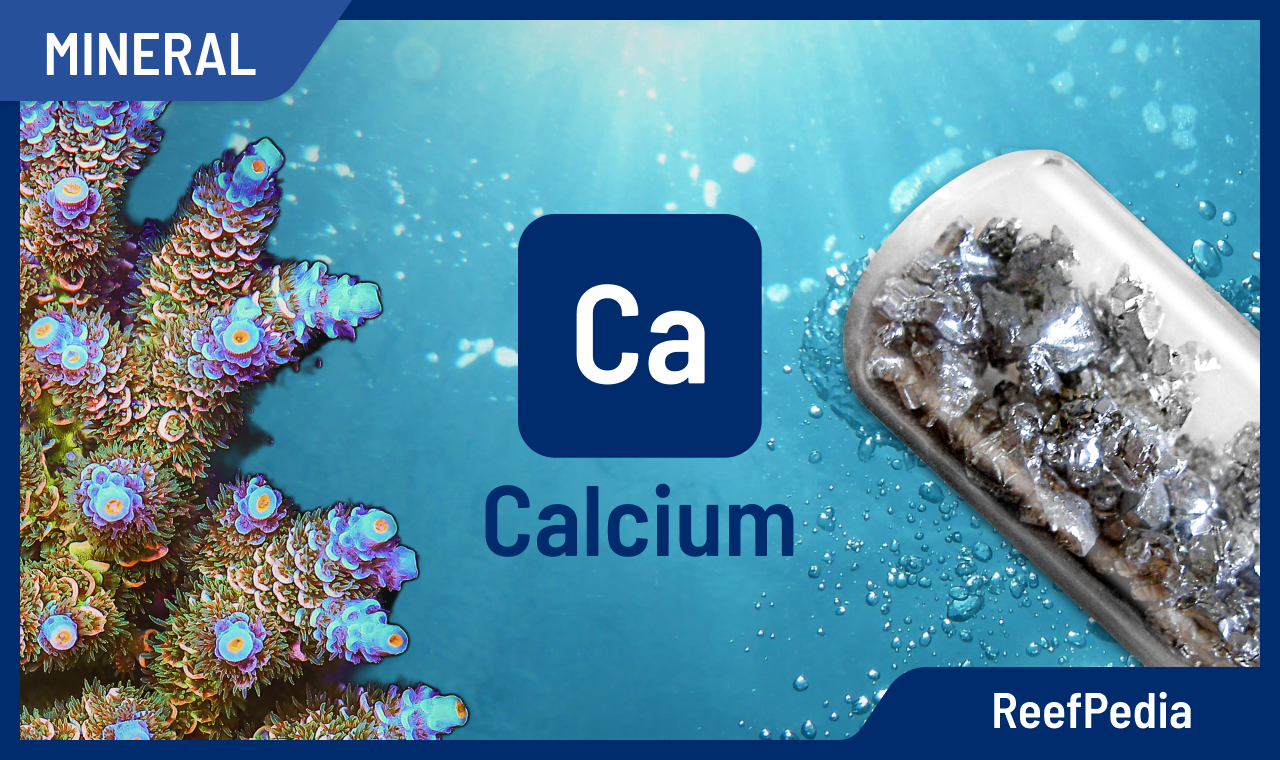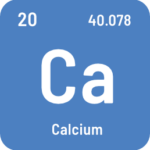Table of Contents
 What is CALCIUM (Ca)?
What is CALCIUM (Ca)?
Calcium (Ca) is the fifth most abundant element in the earth’s crust, it occurs in the form of numerous silicates and aluminosilicates. Chemically, calcium belongs to the alkaline earth group of the periodic table (Mendeleev’s table). Free calcium is almost non-existent in nature because it is highly reactive.
In water, calcium (Ca) is present mainly in the form of calcium ions (Ca2+).
Importance of Ca in seawater
Calcium (Ca) is one of the most important, if not the most important mineral in seawater. It plays an important role in the construction of many marine organisms, including corals, mussels, macroalgae and bacterial biofilms.
Calcium is an essential part of the system responsible for coral growth. Coral combines calcium ions with carbonates to form calcium carbonate (the main building component of the coral skeleton). The process of creating calcium carbonate (chemical reaction) is shown below.
Ca2+ + CO32- → CaCO3 ↓
chemical reaction forming calcium carbonate
Calcium carbonate is the main element in the skeleton of corals and other invertebrates, it occurs in various forms and creates the coral skeleton or mussel shells. For the production of hard tissues, living organisms mainly use: silicon dioxide, calcium carbonate, calcium phosphate, calcium oxalate, iron oxides, as well as sulfides and halides. The most common tissue building compounds are carbonate (CaCO3) and calcium phosphate (Ca3(PO4)2); calcium is present in the chemical structure of both of these compounds.
Calcium carbonate also acts as a buffer system and also supports the growth of calcareous algae. In addition, calcium forms complex compounds with various proteins and is a stabilizer of cell membranes.
Problems related to excess or deficiency of calcium in seawater
Too low calcium values in seawater inhibit the growth of corals and reduce the stability of the elements responsible for the correct level of salinity. With a decrease in the concentration of calcium, the value of carbonate hardness increases significantly.
Too high calcium values in seawater cause unstable carbonate hardness values and detachment of coral tissues. Calcium carbonate (CaCO3) is highly saturated in seawater and tends to precipitate (a noticeable precipitate) after exceeding its solubility limit (13-16 mg/L).
The table below shows anions (marked in red) and cations (marked in green), which when combined form salts with different solubility in water.
Solubility of salts and hydroxides in water at 25°C
| Cl– | Br– | I– | NO3– | CH3COO– | S2- | SO32- | CO32- | SiO32- | CrO42- | PO43- | |
| Na+ | R | R | R | R | R | R | R | R | R | R | R |
| K+ | R | R | R | R | R | R | R | R | R | R | R |
| NH4+ | R | R | R | R | R | R | R | R | x | R | R |
| Cu2+ | R | R | x | R | R | N | N | x | N | N | N |
| Ag+ | N | N | N | R | R | N | N | N | N | N | N |
| Mg2+ | R | R | R | R | R | R | R | N | N | R | N |
| Ca2+ | R | R | R | R | R | T | N | N | N | T | N |
| Ba2+ | R | R | R | R | R | R | N | N | N | N | N |
| Zn2+ | R | R | R | R | R | N | T | N | N | T | N |
| Al3+ | R | R | R | R | R | x | x | x | N | N | N |
R – soluble substance T – sparingly soluble substance x – substance either decomposes in water or has not been obtained
N – insoluble substance (each substance has its solubility limit)
source: W. Mizerski, Tablice Chemiczne, Adamantan, 2004
How to protect the aquarium?
Calcium content should be checked regularly and maintained at the correct level. We recommend keeping the calcium level between 380-460 ppm, with the optimal value being 440 ppm. Such a level of calcium in seawater ensures health and beautiful coloration of the animals.
The Ca parameter can be controlled in several ways:
Method I:
systematic testing of calcium content in seawater at home, using drop tests, such as the Ca Smart test kit from Reef Factory.
Method II:
sending a seawater sample for ICP analysis. ICP-OES (Inductively Coupled Plasma Optical Emission Spectrometry) is the most accurate method of analyzing the elemental composition of seawater.
Indicators of abnormal Ca levels in a marine aquarium
When observing the aquarium, you can see signs of abnormal calcium levels in the seawater. The following phenomena may be of concern:
⦁ all corals lose their colors (e.g. Montipora, Stylophora pistillata var. “Milka”, Echinopora lamellosa)
⦁ noticeable growth disorders, visible mainly on new growths and growth cones
⦁ increase in KH level
Recommendations
To ensure the proper level of calcium in the aquarium, its proper level should be regularly monitored.
If the calcium level is above 480 ppm, you should stop supplementing sea water with preparations containing calcium. Find and eliminate the cause of the problem and lower the value of this parameter in the water. Check the dosing parameters on the dosing pumps, then perform up to 6 water changes. It is recommended to change about 15% of the aquarium water volume at each water change, until the recommended value of the parameter is reached. Water prepared for replacement must be characterized by an appropriate level of target salinity. Use salt with the correct parameters and composition for an ICP test.
If the calcium level is below 380 ppm, it’s worth using products containing this element to compensate for it. To ensure a constant level of calcium in a marine aquarium, we recommend systematic supplementation of this element depending on the coral stock in your aquarium.
About author

Magdalena Metzler
Privately, I am a mother and a lover of nature and sport. My main interest is quantum chemistry, which hides a whole lot of unsolved mysteries and connections, which is extremely exciting from a scientific point of view.
In my scientific career, I have conducted international projects focused on innovative solutions for many branches of business, e.g. automotive, construction, and now, of course, marine aquaristics.
Working at Reef Factory gave me a passion for marine aquaristics, which I can develop every day, building a chemistry department and creating products that will help aquarists take care of tanks and ensure the highest safety of animals. One of the most exciting memories of working at Reef Factory is the commissioning of the ICP-OES spectrometer, which analyzes the elemental composition of seawater. The method of analysis in ICP is based on an analytical technique, which is a combination of my passion for quantum chemistry and marine aquaristics.
I hope you find my articles on ReefPedia interesting and helpful! Happy reading :))


 What is CALCIUM (Ca)?
What is CALCIUM (Ca)?